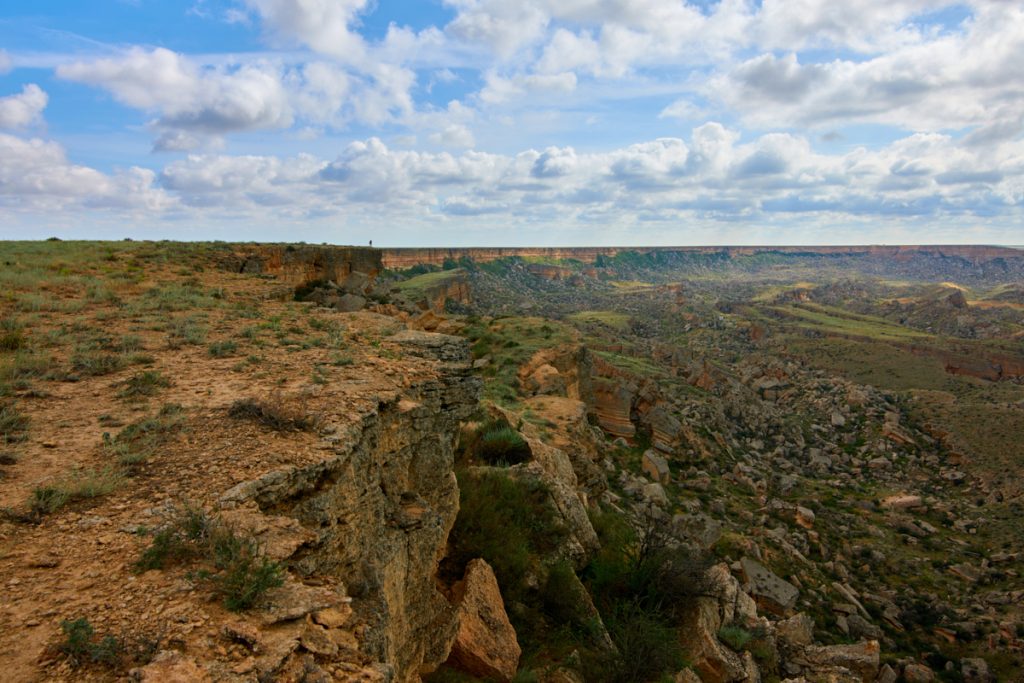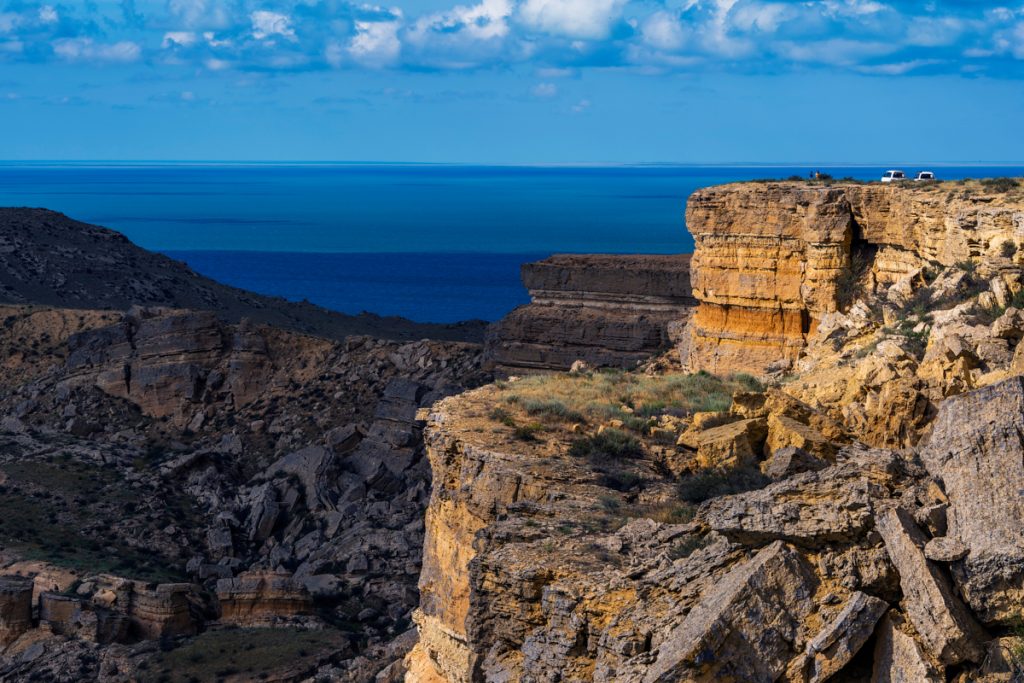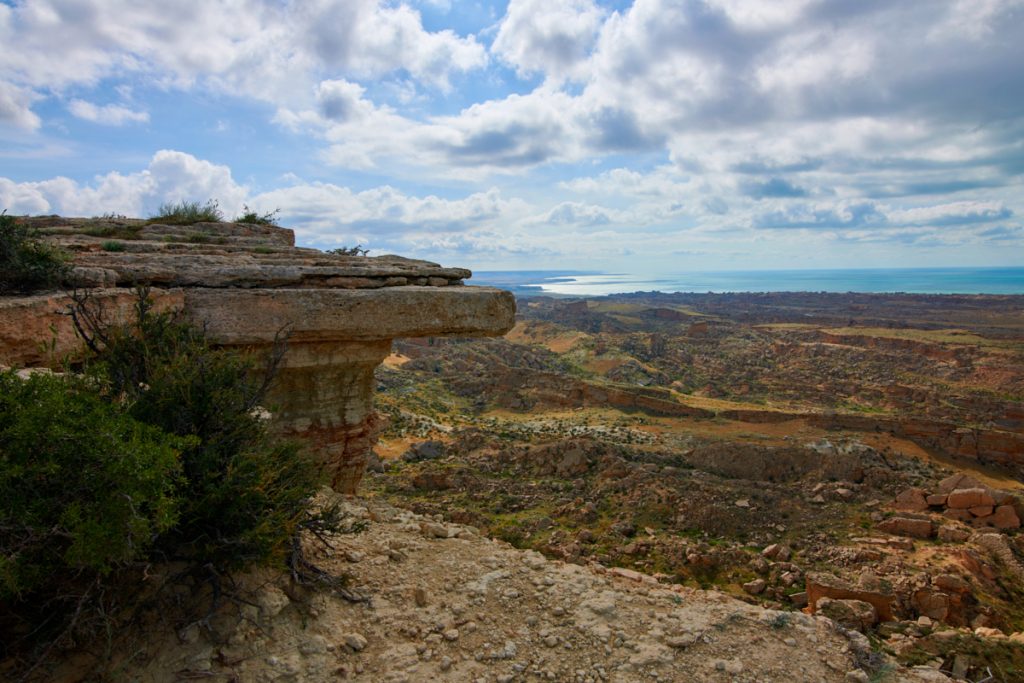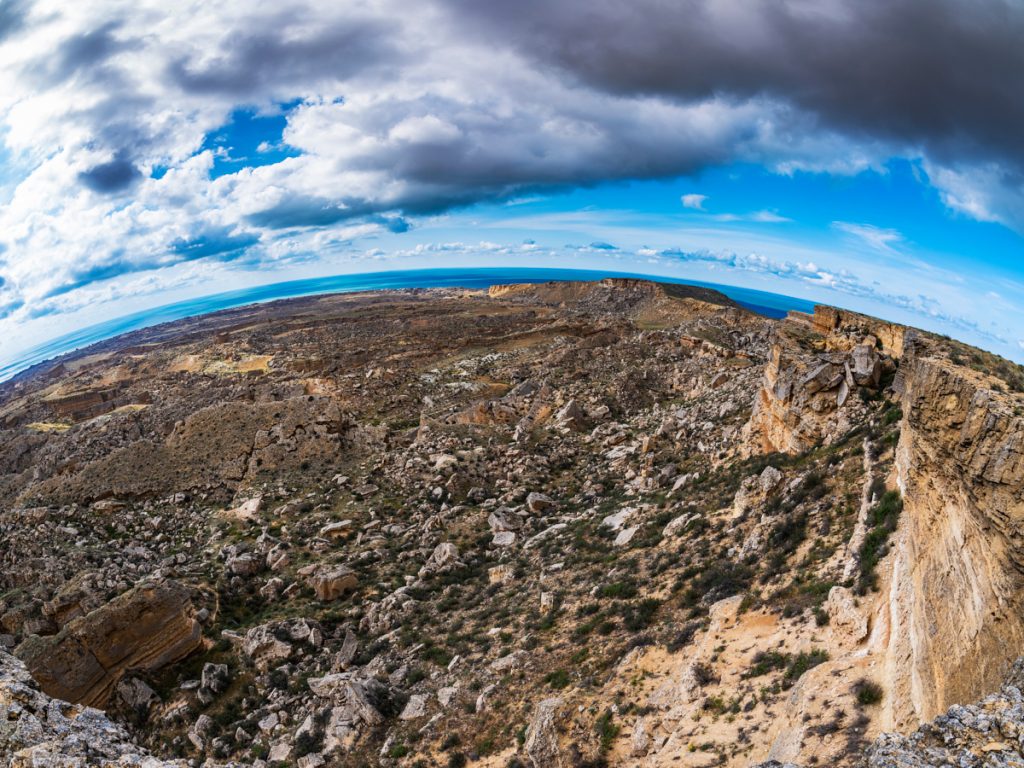One of the most unique and mysterious places in Mangystau is Cape Zhygylgan, which means «Fallen Land» in Kazakh. It is a vast mountain range covered with stones of various shapes. The meaning of the name will become clear when you witness this place firsthand: a massive mountain «fell» to the ground, breaking into different stones, some of which are as large as houses.

According to scientists, this phenomenon occurred as a result of an earthquake or other natural disaster. There is also a hypothesis that the land collapse was caused by the displacement of tectonic plates. Some even suggest that the continuous erosion from the sea water washing the bottom of this location created a cavity, leading to the surface collapse.
According to local legend, a prophet living here ancient times would ride on his horse to the base of this mountain and offer prayers by the sea each day. However, one day, after completing his prayer, he discovered that his horse had vanished. Convinced that there were no thieves in such a desolate area, the prophet concluded that «the mountain had swallowed the horse». Before he could contain his anger and curse the mountain that stood on its own, the big rocks collapsed and tumbled into the center.

This ‘fallen’ place, the origin of which remains a mystery, is now a remarkable tourist destination. It enchants visitors and unveils the secrets of history through its pertoglyphs. When you arrive at this location, you will be able to gaze down from the highest point of the cape and admire the diverse rock formations in the valley. If you let your imagination run wild, you can perceive stone castles, animal silhouettes, and various geometric shapes. This extraordinary exhibition of stones extends for 4 kilometers towards the sea. Such an alluring scenery has become the favored spot for photographers in the region.
In certain areas, the depth here reaches 200 meters, and you may encounter a variety of animals, including deer, wolves, hares, snakes, and foxes. However, do not be disheartened if you do not spot any living creatures; instead, you can appreciate the traces of animals that disappeared before us, such as the saber-toothed tiger (machairod), ostrich, and the ancient hipparion. It is believed that these animals, belonging to the Neogene era, inhabited the Mangystau steppe 10-15 million years ago. Additionally, other images are also carved into the rocks.

The smallest lake in the region, Lake Kozdikara, is located near Zhygylgan, approximately 2.2 km southeast. It has a length of 87 m from north to south, a width of 54 m from east to west, and stands at a height of 5.3 m above sea level. The water in the lake, which fills up during spring and recedes in June, is highly saline and dense, unsuitable for drinking. However, in the vicinity, you can find a spring with refreshing freshwater. The presence of a partially ruined well near the water source and several caves serves as evidence that people inhabited this area in the past.

The journey from Aktau to Cape Zhygylgan takes approximately 4-5 hours, covering a distance of about 170 kilometers. However, as the road consists of dirt tracks, it is preferable to travel in SUVs rather than cars. Given the hot and arid climate of the Mangystau steppe during summer, it is recommended to visit this place in spring or autumn. We also suggest staying overnight in Zhygylgan to explore the depressions and delve deeper into the study of the stones. It provides an opportunity to relish the breathtaking view of the setting sun casting its radiant red glow over the sea, and to witness thousands of stars illuminating the open sky firsthand.



